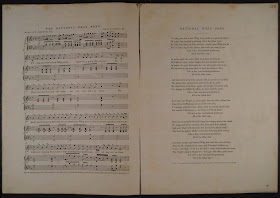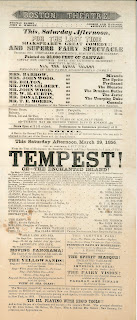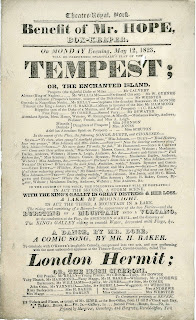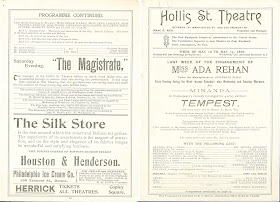 One aspect that dominated earlier presidential elections in the United States missing from modern day elections is campaign songs. Candidates today often use already popular songs as "theme songs," a tradition started by FDR in 1932. In previous centuries lyrics specific to the candidate would be set to well known tunes. This allowed for more direct arguments in songs to be sung in rallies and spread in support of certain candidates. Looking at the bold and sometimes absurd lyrics, the images the candidates wanted to portray of themselves (and their opponents) becomes strikingly clear.
One aspect that dominated earlier presidential elections in the United States missing from modern day elections is campaign songs. Candidates today often use already popular songs as "theme songs," a tradition started by FDR in 1932. In previous centuries lyrics specific to the candidate would be set to well known tunes. This allowed for more direct arguments in songs to be sung in rallies and spread in support of certain candidates. Looking at the bold and sometimes absurd lyrics, the images the candidates wanted to portray of themselves (and their opponents) becomes strikingly clear. For example, "For Jefferson and Liberty" made the pretty obvious link between the election of Thomas Jefferson and escape from religious bigotry and tyranny. George Washington was similarly straightforward in "Follow Washington" (featuring lyrics such as "My lads march on/And follow, follow Washington"). The peppy, upbeat melodies were easy to follow, allowing for wide distribution and singing at events.
However, candidates were not opposed to an occasional smear campaign. Depictions of the grim future other candidates would bring to America are common in modern elections and were just as prominent in the nineteenth century. "Little Know Ye Who’s Coming" was a frankly terrifying description of the future should John Quincy Adams not be elected--an America filled with swords, pistols, guns, famine, slavery and knavery. On a similar note, "If the Johnies Get Into Power Again" warned against allowing the Southern Democrats to win the 1880 election, as "The nation’s flag will lose its stars/The stripes they’ll change to rebel bars."
 Rauner has a number of works from one election famous for its campaign songs. The 1840 presidential election had one of the more extensive and influential repertoires, forming a key part of William Henry Harrison's enthusiastic campaign. "Tippecanoe and Tyler Too" is perhaps the best-known campaign song of all time. The song that became Harrison's slogan refers to Harrison's battle between his Indiana militia and Native Americans while gesturing to his vice president, John Tyler, "too." While "Tip and Ty" was most popular, Harrison had other songs, such as the "National Whig Song," which called for citizens to vote for this "fine, true-hearted gentleman." Harrison's aggressively upbeat campaigning allowed him to side-step national issues, such as slavery. Instead, he was able to portray himself as the candidate of the people in a time of economic depression. Unfortunately, his intense campaigning and extended inauguration speech led to Harrison's death of pneumonia only a month after being sworn into office.
Rauner has a number of works from one election famous for its campaign songs. The 1840 presidential election had one of the more extensive and influential repertoires, forming a key part of William Henry Harrison's enthusiastic campaign. "Tippecanoe and Tyler Too" is perhaps the best-known campaign song of all time. The song that became Harrison's slogan refers to Harrison's battle between his Indiana militia and Native Americans while gesturing to his vice president, John Tyler, "too." While "Tip and Ty" was most popular, Harrison had other songs, such as the "National Whig Song," which called for citizens to vote for this "fine, true-hearted gentleman." Harrison's aggressively upbeat campaigning allowed him to side-step national issues, such as slavery. Instead, he was able to portray himself as the candidate of the people in a time of economic depression. Unfortunately, his intense campaigning and extended inauguration speech led to Harrison's death of pneumonia only a month after being sworn into office. Looking at these examples makes one wonder - should Obama and Romney be writing their own campaign songs? While will.i.am created a memorable music video "Yes, We Can" supporting Obama in 2008, no such tunes have emerged this year. Would YouTube and the Internet offer a new way to make these campaign songs go viral?
To sing along, ask for: The National Whig song - SC 414, Tip and Ty - SC 288, The Whigs of Colombia shall prevail - SC 478
Posted for Kate Taylor '13.


